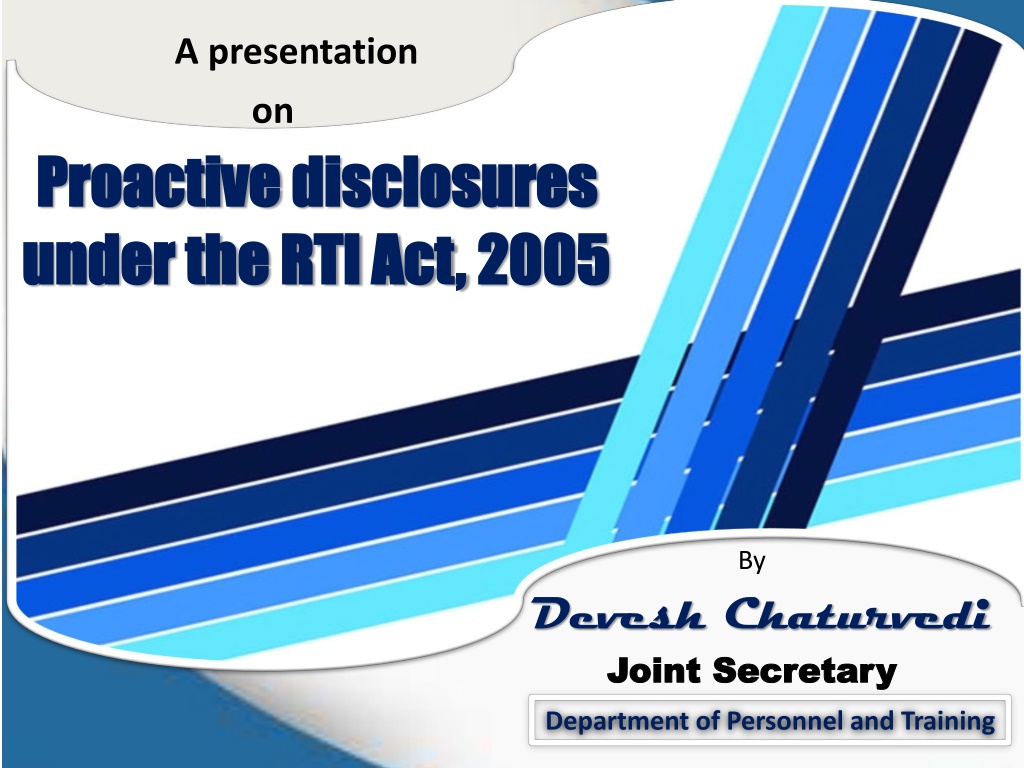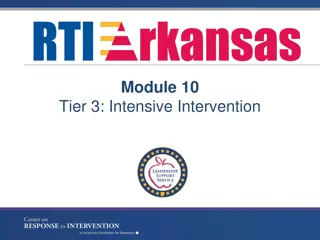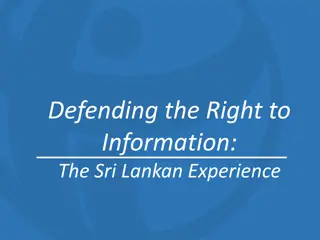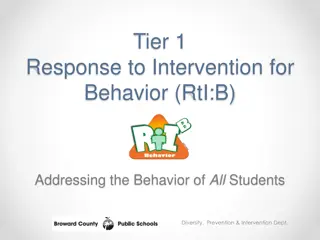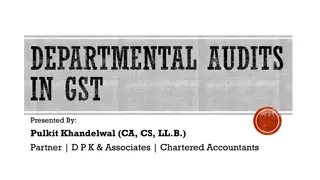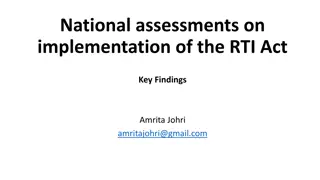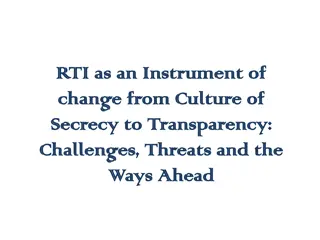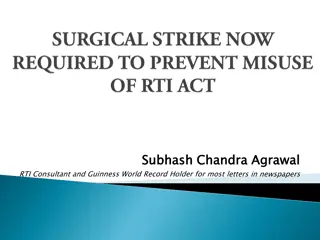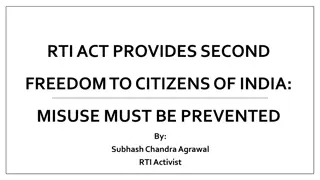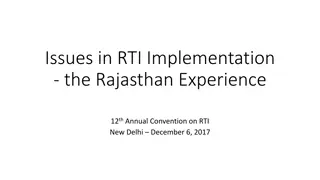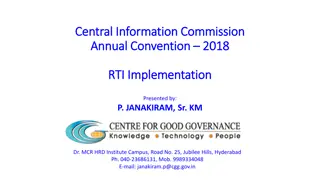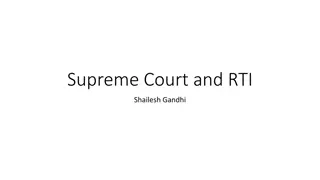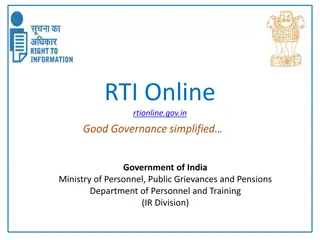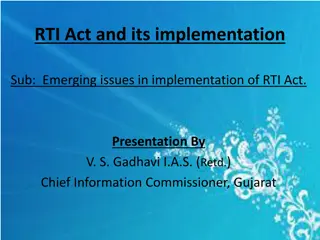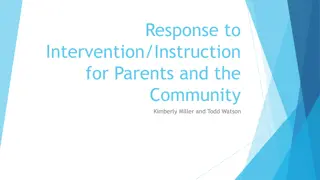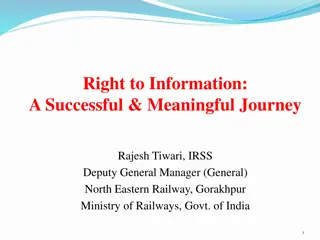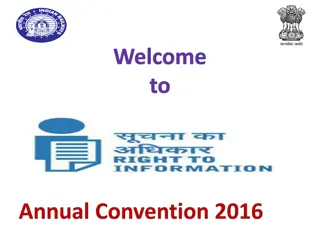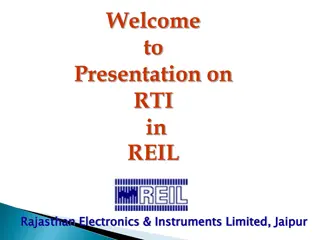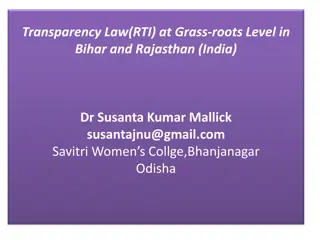Understanding Disclosures under the RTI Act
Exploring the evolution of disclosures under the RTI Act of 2005, this presentation outlines the shift from the Pre-RTI regime of holding onto information to the Post-RTI regime of proactive disclosures. It delves into legal provisions mandating Public Authorities to maintain transparency through Section 4, highlighting obligations such as cataloguing records, annual updates, and providing reasons for decisions. Additionally, policy directives and guidelines for proactive disclosures are discussed, emphasizing the importance of public access to information for a transparent governance system.
Download Presentation

Please find below an Image/Link to download the presentation.
The content on the website is provided AS IS for your information and personal use only. It may not be sold, licensed, or shared on other websites without obtaining consent from the author. Download presentation by click this link. If you encounter any issues during the download, it is possible that the publisher has removed the file from their server.
E N D
Presentation Transcript
A presentation on disclosures under the RTI Act, under the RTI Act, 2005 Proactive Proactive disclosures 2005 By Devesh Chaturvedi Joint Joint Secretary Secretary Department of Personnel and Training
Let the people know the facts, Let the people know the facts, the country would be safe the country would be safe Abraham Lincoln 2
Pre RTI regime Official Secrets Act Hold on to information until there are pressing reasons to divulge The Legislative questions information was obtained through Leakages Using corrupt means 3
Post RTI Reveal information unless there is pressing reasons to withhold Act has been passed with an objective that people have a right to access information 4
Legal Provisions for Proactive Disclosures Section 4 of the Act makes its obligatory for all the Public Authorities (PA) to keep more and more official information in public domain. Section 4 (1)(a) PA to maintain all records catalogued/indexed for convenient access. To be computerised and connected through network. 5
Legal Provisions Section 4 (1)(b) was obligation to publish within 120 days of the enactment various information related to the organisation thereafter update them every year. Section 4 (1)(c) PAs to publish all relevant facts while formulating important policies for announcing the decisions which affect public. 6
Legal Provisions Section 4 (1) (d) PAs shall provide reasons for its administrative or quasi judicial decisions to affected persons. Section 4 (2) To provide as much information suo-motu various channels of communications ......... So that public have minimum resort to the use of this Act. ............ Through 7
Policy Directives Guidelines vide OM dated 15.04.2013- salient features Information related to Public Procurements Information related to PPP agreements Transfer Policy/Transfer orders RTI applications and their replies (provided they do not concern personal information of individual) Discretionary/non-discretionary Grants to States/NGOs etc Official foreign tours of Ministers/officials of Joint Secy level & above Decision-making processes/structures- Budget allocation Disclosure on official websites with user perspective Third party audit by Organisation to be done annually CIC may conduct sample audits 8 Appointment of Nodal Officer in each Organisation
Policy Directives Based on the recommendations of Committee of Experts- Sri AN Tewari and Dr MM Ansari, OM dated 30.06.2017 was issued: Constitution of Consultative Committees of stakeholders to advise on what to be disclosed Suo motu Setting up of Information and Facilitation Centres Committee of PIO/FAA setup to identify frequently sought information so that they can be kept in public domain Information on websites in categorised , organised in easily searchable mode for easy retrieval . Information should carry date on which it was published/uploaded. 9
Some Positive Impacts Transparency in JEE Mains/JEE Advance Disclosure of status of Performance Appraisal Reports of Officers. Disclosure of beneficiaries data base for all welfare schemes of Government 10
Challenges Obligations on Public Authorities, but no provisions for enforcement Effectiveness depends on initiative taken by individual officers in the Public Authority Rapid expansion of information on official websites which may or may not be user friendly. Conduct of regular third Party Audits 11
Sensitisation of Public Authorities that more dissemination will lead to reduced RTI related workload The way forward Independent assessment of performance of Public Authorities on the qualities of disclosure e.g. Transparency Index of CIC Involvement of internal and external stakeholders for deciding what to disclose 12
